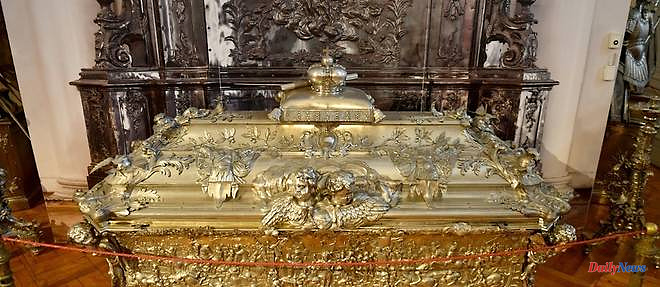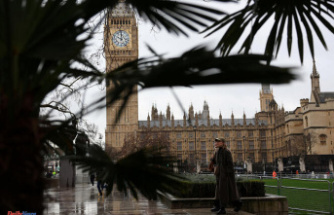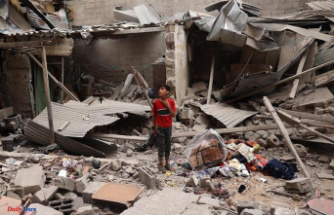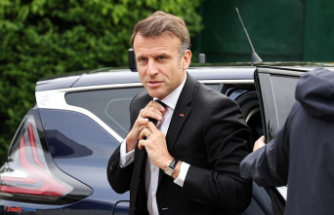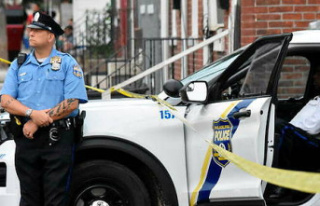In recent weeks, the two main Russian museums have announced that they are ceding two of their most famous artefacts to the Church, a sign of its growing influence with the Kremlin, which is counting on its support in the midst of the conflict in Ukraine.
If the transfer of these national treasures to the Church satisfies believers, art experts denounce a political approach jeopardizing the future of pieces as precious as they are fragile.
The shock comes in mid-May when the Patriarchate announces President Vladimir Putin's decision to cede to it by decree the icon of The Trinity by Andrei Rublev, a true national emblem dating from the 15th century.
The most mysterious of Russian icons, whose perfect harmony has drawn crowds for a century to the Tretyakov Gallery in Moscow, is to be exhibited from June 4 in the Cathedral of Christ the Savior, near the Kremlin.
The painting must then return to its original monastery of the Trinity-Saint-Serge in Seguiyev Posad, the "Russian Vatican" located 70 km from Moscow.
Almost at the same time, the famous Hermitage Museum in Saint Petersburg (north-west) announced that it was ceding the tomb of Prince Alexander Nevsky, a true national hero who lived in the 13th century, to the monastery which housed him before the Bolshevik revolution.
"At this geopolitical moment (...), the sacred value of the monument is more important than its artistic value", justifies the director of the Hermitage, Mikhail Piotrovsky.
These presidential donations come in the context of Moscow's offensive in Ukraine, actively supported by the head of the Russian Orthodox Church, Patriarch Kirill, an ally of Mr. Putin.
By transferring these relics to the Church, the president "wants to return Russia to its base", declared to AFP Leonid Kalinin, until recently in charge of religious art at the Patriarchate.
As centuries ago, religious symbols are indeed fully part of the conflict.
In April, during a trip to a Russian-occupied region of southern Ukraine, Mr. Putin offered the soldiers a copy of an icon, the original of which was sent to a church dedicated to the armed forces.
In this context, Rublev's Trinity, with its three angels seated at a table around a common cup, becomes a symbol of the unity of the country.
"Contemplating Rublev's Trinity helped Russian princes overcome the discord of the world," Lev Lifshits, 80, author of numerous books on ancient Russian art, told AFP.
Last July, this icon had already been exhibited for three days at the monastery of the Trinity of Saint Sergius.
But faced with the defenders of art, the Church can count on a master asset: Vladimir Putin, who is counting on the help of the Patriarchate to rally the population in the midst of a conflict with Kiev.
The alliance between the Kremlin and the Church in times of trouble is not new: in 1943, despite official atheism, Stalin "rehabilitates the Orthodox clergy and reopens 10,000 churches" in the USSR, notes Mr. Kalinin.
According to a widespread legend in Russia, Stalin even flew over Moscow with a plane carrying a miraculous icon, to unite the nation at war against Nazi Germany.
In this context, for Mr. Lifshits, the transfer of The Trinity from Rublev to the Church is "political".
"This decision by the Kremlin means that the political situation there is perceived as extremely serious," adds Russian political scientist Georgy Bovt.
"Still no victory (over Ukraine), the army is not big enough, all that remains for Putin is to ask God to help him", like the sovereigns of yesteryear, he summarizes for AFP.
But art experts are above all alarmed by the danger hanging over works transferred to the Church, where conservation conditions will be less professional.
The transfer of La Trinité de Rublev "risks destroying it", warns Mr Lifshits. After the icon was exhibited at the monastery in July, experts noted 61 signs of deterioration, despite the protective capsule.
If she leaves her museum again, "the next generation will no longer see her in her current appearance," expert Lilia Evseeva of the Museum of Icons in Moscow told AFP.
The return of this artefact to the Church provoked a mobilization of the Russian Academy of Sciences: last week, around twenty scholars denounced its “disastrous state” making its entire move “impossible and inadmissible”.
Sign of the tension surrounding this debate, the priest Leonid Kalinin was abruptly dismissed from his duties last week, after suggesting that a copy of The Trinity be exhibited in the cathedral, while waiting for a powerful protective capsule to be created. .
02/06/2023 10:32:55 - Moscow (AFP) - © 2023 AFP

